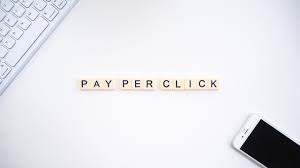The Power of Pay-Per-Click Advertising
Pay-Per-Click (PPC) advertising is a powerful digital marketing strategy that allows businesses to drive targeted traffic to their websites by paying for ad placements on search engines and other online platforms. With PPC, advertisers only pay when a user clicks on their ad, making it a cost-effective way to reach potential customers.
One of the key benefits of PPC advertising is its ability to target specific audiences based on keywords, demographics, location, and other factors. This targeted approach ensures that ads are shown to users who are most likely to be interested in the products or services being offered, increasing the chances of conversion.
PPC campaigns can be highly customizable, allowing advertisers to set budgets, target specific keywords, and track performance in real-time. This level of control enables businesses to optimize their campaigns for maximum ROI and make data-driven decisions to improve results over time.
Furthermore, PPC advertising offers instant visibility and results, unlike organic search engine optimization (SEO) which can take time to see significant results. By bidding on relevant keywords and creating compelling ad copy, businesses can quickly attract visitors to their websites and generate leads or sales.
In conclusion, Pay-Per-Click advertising is a valuable tool for businesses looking to increase online visibility, drive targeted traffic, and achieve measurable results. By leveraging the power of PPC, businesses can reach their target audience effectively and efficiently while maximizing their marketing budget.
6 Essential Strategies for Maximizing Your Pay-Per-Click Campaign Success
- Use relevant keywords in your ad copy to attract the right audience.
- Monitor and analyze your campaign performance regularly to make data-driven decisions.
- Set a clear budget and bid strategy to control your spending effectively.
- Optimize your landing pages for better conversion rates and user experience.
- Utilize ad extensions to provide more information and improve ad visibility.
- A/B test different ad creatives to identify what resonates best with your target audience.
Use relevant keywords in your ad copy to attract the right audience.
Utilizing relevant keywords in your ad copy is crucial for attracting the right audience in a Pay-Per-Click campaign. By incorporating keywords that directly align with what your target audience is searching for, you increase the chances of your ad being displayed to users who are genuinely interested in your products or services. This strategic approach not only improves the quality of traffic to your website but also enhances the overall effectiveness of your PPC campaign by ensuring that you are reaching individuals who are more likely to convert into customers.
Monitor and analyze your campaign performance regularly to make data-driven decisions.
Monitoring and analyzing your pay-per-click campaign performance regularly is crucial for making informed, data-driven decisions. By tracking key metrics such as click-through rates, conversion rates, and return on investment, you can gain valuable insights into what is working well and what areas need improvement. This data allows you to optimize your campaign strategy, adjust bidding strategies, refine ad copy, and target keywords more effectively to maximize results and ensure that your PPC efforts are driving the desired outcomes.
Set a clear budget and bid strategy to control your spending effectively.
Setting a clear budget and bid strategy is crucial when it comes to managing your Pay-Per-Click (PPC) advertising campaigns effectively. By establishing a budget that aligns with your marketing goals and determining a strategic bidding approach, you can control your spending and optimize your campaign performance. This proactive approach not only helps you stay within your financial limits but also allows you to allocate resources efficiently, target the right audience, and maximize the return on investment from your PPC efforts.
Optimize your landing pages for better conversion rates and user experience.
Optimizing your landing pages is crucial for improving conversion rates and enhancing user experience in your Pay-Per-Click campaigns. By ensuring that your landing pages are relevant, engaging, and user-friendly, you can increase the chances of turning clicks into valuable actions such as sign-ups, purchases, or inquiries. A well-optimized landing page that aligns with the ad’s messaging and provides clear calls-to-action can significantly impact the success of your PPC efforts, ultimately driving more meaningful interactions with your target audience.
Utilize ad extensions to provide more information and improve ad visibility.
By utilizing ad extensions in your Pay-Per-Click campaigns, you can enhance the effectiveness of your ads by providing additional information and improving visibility. Ad extensions allow you to include extra details such as location, phone number, links to specific pages on your website, and more, giving users a better understanding of your offerings before they even click on the ad. This not only increases the relevance of your ads but also makes them more informative and appealing to potential customers, ultimately leading to higher click-through rates and improved overall campaign performance.
A/B test different ad creatives to identify what resonates best with your target audience.
A/B testing different ad creatives is a crucial strategy in optimizing your pay-per-click campaigns. By experimenting with variations in ad copy, imagery, or calls-to-action, you can identify what resonates best with your target audience. This data-driven approach allows you to refine your ads based on real-time performance metrics, ultimately improving click-through rates and conversion rates. Continuous A/B testing ensures that your PPC campaigns remain relevant and engaging, leading to more effective results and a higher return on investment.

